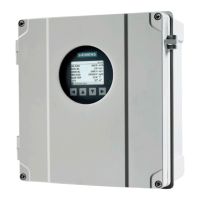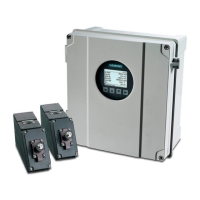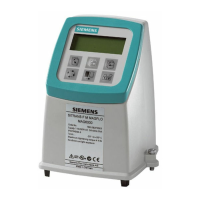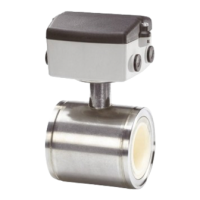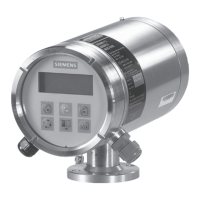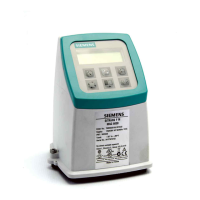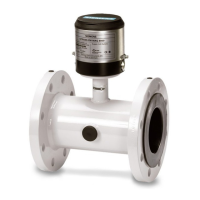A brief description of each sensor diagnostic parameter is given in the table below, along with
the typical range of values for pipe sizes 12 – 1200mm. Note that separate parameters are
available for each installed path.
Diagnostic parameter Description Typical values
RXGain up Receive amplifier gain value for the upstream receive signal. Lower gain
values indicate a stronger receive signal.
0 to 50 dB
RxGain down Receive amplifier gain value for the downstream receive signal. Lower
gain values indicate a stronger receive signal.
0 to 50 dB
SNR up Signal to Noise Ratio of upstream signal. A high SNR indicates less
baseline noise on the receive signal.
25 to 80 dB
SNR down Signal to Noise Ratio of downstream signal. A high SNR indicates less
baseline noise on the receive signal.
25 to 80 dB
Sound velocity Fluid sound velocity 600 to 2000 m/s
Flow velocity Flow velocity. Represents the measured path flow velocity before flow
profile compensation.
0 to ±15 m/s
Delta time The precisely measured time difference between the upstream and
downstream receive signals.
0 to 10000 ns
Travel time up Measured transit-time from transmit to reception of the upstream receive
signal.
15 to 3000 μs
Travel time down Measured transit-time from transmit to reception of the downstream re‐
ceive signal.
15 to 3000 μs
Correlation factor A dimensionless indication of how strongly correlated the upstream and
downstream signal are to each other. A value of 1 represents the best
correlation, 0 the worst.
0.9 to 1
%-rate of accepted
bursts
% of bursts accepted
Based on various diagnostic input (i.e. correlation strength, gain level,
SNR, etc.) the meter may reject specific up/down receive sets or bursts.
The percentage of accepted bursts is one measure of the application’s
health.
Less than 100% generally indicates a disruption in the fluid, such as from
suspended solids or bubbles in the liquid.
99 to100%
Actual sensor frequen‐
cy
The actual transmit frequency for the specific path. Determined after
performing a "frequency sweep" to determine the best frequency match
to the pipe wall.
130000 to 4000000 Hz
(0.13 to 4.0 MHz)
Peak amplitude up Downstream signal peak amplitude within the ADC (analog to digital
converter) range. Too high a value can indicate amplifier saturation. Too
low could indicate high noise.
4000 to 8000
Peak amplitude down Upstream signal peak amplitude within the ADC (analog to digital con‐
verter) range. Too high a value can indicate amplifier saturation. Too low
could indicate high noise.
4000 to 8000
Min acc travel time The minimum acceptable transit-time for reliable flow measurement.
Signals arriving before this time will cause the flowmeter to generate a
configuration alarm or prevent proper signal detection.
Max acc travel time The maximum acceptable transit-time for reliable flow measurement.
Signals arriving after this time will cause the flowmeter to generate a
configuration alarm or prevent proper signal detection.
Diagnostics and troubleshooting
9.5 Check sensor specific data
SITRANS FST030 (Modbus)
98 Operating Instructions, 08/2018, A5E37367739-AD

